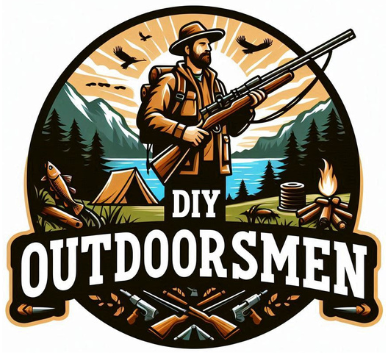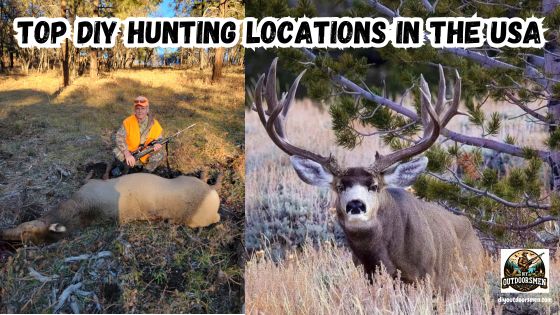Contents
- 1 Understanding the Western Public Land Opportunity
- 2 Navigating the Complexity of Hunting Regulations
- 3 The Essential Gear for DIY Hunting
- 4 Affordable Fun: Planning Cost-Effective DIY Hunts
- 5 Planning the Perfect DIY Hunt: Critical Questions
- 6 Strategies for Success: Learning and Adapting in the Field
- 7 Top 10 Best DIY Hunting Locations in the United States
There’s something uniquely exhilarating about the idea of a DIY hunting trip. Imagine heading out into the wild, just you, your gear, and the determination to hunt game using nothing more than your wits and patience. It’s a thrill that calls to the hunter’s soul, offering the chance to connect deeply with nature while pursuing something traditionally American.
QUICK LOOK: Top US DIY Hunting Locations
- For deer hunters, Wisconsin and Pennsylvania stand out. Both offer vast public lands with healthy deer populations and cater to the skillful DIY hunter. Their management systems support plentiful deer herds every season, making it easier to spot potential trophies.
- Elk enthusiasts might consider heading to Colorado or New Mexico. These states boast some of the largest elk herds west of the Mississippi, providing untamed landscapes suited for a classic Western hunt.
- When it comes to hunting wild turkey, states like Missouri and Alabama are prime. They have extensive conservation programs ensuring thriving turkey numbers, ideal for both seasoned hunters and novices.
- Duck hunting sees Louisiana as a key player. Its rich wetlands are perfect for those wanting to experience the challenges of waterfowl hunting in a dynamic environment.
- For a more northern adventure, Alaska offers impressive caribou hunts. Stepping onto its raw terrain gives the ultimate hunting experience, albeit one demanding higher preparedness and endurance.
- Texas remains a hotspot for hog hunting. With a liberal bag limit, it’s fantastic for hunters looking to sharpen skills with fast-paced hunts.
- Wyoming offers some awesome Pronghorn hunting with plenty of animals, lots of public lands, with plenty of inexpensive tags.
For those venturing into public lands, the challenge doubles as an adventure. You’re tackling wilderness areas vast and beautiful, yet demanding of skill and resilience. These public domains offer the freedom to roam and hunt without restriction, but they also require respect and knowledge of the terrain and its inhabitants.
Here’s the kicker: organizing a DIY hunting trip means relying solely on your instincts and resources. While many love this aspect of going it alone, some might find it intimidating. Yet, the rewards of DIY hunting go beyond just bringing home a trophy.
They include the stories you’ll tell, the experiences shared, and lessons learned from every outing. If that sounds appealing, you’re starting in the right mindset for a memorable hunting trip.
Understanding the Western Public Land Opportunity
DIY Hunting on Western public land is a whole different ball game. Out west, these lands aren’t just plentiful, they’re practically a hunter’s playground. But such vast territories mean learning the lay of the land is key before you set off.
Public lands in the West offer an incredible mix of hunting opportunities and the possibility of encountering less hunting pressure, considering the sheer scale of these areas. Access is generally open, but it’s wise to double-check access rules, as these can vary.
Embracing this wilderness requires groundwork. You need to know the terrain, understand where the game is congregated, and most importantly, how to navigate remote areas safely. Unlike hunting grounds closer to bustling roads and cities, these landscapes are raw and untouched, demanding more than just a good aim.
It’s vital to respect the natural habitat and the regulations set forth to keep these lands pristine and hunting sustainable. This isn’t just about bagging the next big game trophy but enjoying the freedom and challenge of being self-reliant in such vast terrain.
Preparation is a hunter’s best ally when exploring these Western domains. Research maps, speak with locals if you can, and maybe balance between traditional hunting methods and some tech-savvy apps that provide GPS locations and terrain information. Equip yourself adequately to meet the diverse challenges, from rough trail paths to unpredictable weather changes.
Accustomed as you might be to structured hunts in more tame settings, the West demands a bit more grit. But with this comes a chance to learn humility, patience, and the thrill of chasing game where animals still command their natural crowns.
- Before you head out, understanding hunting regulations is critical. This can often feel like navigating a maze, especially in the Western states, where hunting rules are as diverse as the landscapes.
- Big game tag applications can be a test of patience. Some states employ a lottery system, requiring you to apply multiple times over several years before getting that coveted tag. It’s crucial to familiarize yourself with these processes and keep an eye on deadlines to increase your chances.
- Season dates and bag limits are other vital aspects to grasp. They change yearly, often based on wildlife conservation efforts, so keeping updated is essential. You wouldn’t want to plan your trip only to find out the season’s closed.
- Hunting unit boundaries can also complicate matters. These boundaries dictate precisely where you can or cannot hunt, and there’s no wiggle room. Detailed maps are your friend here. Mark them, study them, and ensure you’re always aware of your position relative to these lines.
- Preparing and researching beforehand can save many headaches. Checking state wildlife agency websites, joining local hunting forums, or even chatting with local hunters can provide invaluable insights. Missing a deadline or misunderstanding a regulation can ruin a trip, so give yourself plenty of lead time to get things right.
By committing to understand the rules inside out, not only do you remain on the right side of the law, but you also help preserve these public lands for future generations of hunters. Knowledge and respect for the regulations demonstrate integrity crucial for any hunter-enthusiast.
The Essential Gear for DIY Hunting
Packing the right gear can make or break your DIY hunting adventure. It’s not just about having enough to survive but choosing gear that complements your skills and intentions.
Western terrains are as diverse as they are challenging. Whether you’re navigating rocky mountains or dense forests, your gear needs to be up for the task. Essentials include a reliable backpack, suitable clothing layers to handle unpredictable weather, and sturdy boots that won’t quit on you halfway through.
Let’s talk weaponry. Whether you’re a bowhunter or prefer a rifle, ensure your gear is suited to the game you’re after. Practice regularly to know your equipment like an extension of yourself.
Navigation tools are non-negotiable. GPS devices or even topo maps and a compass can steer you clear of getting lost in the sprawling wilderness. Familiarize yourself with these tools before you set out, so they aren’t just dead weight in your pocket.
Food and hydration systems are equally crucial. Portable water filters or purification systems can ease the burden of carrying exorbitant water supplies. Meanwhile, high-energy snacks and meals ready to cook up quickly will keep your energy levels up without excessive weight.
Balance is vital—ensure you’ve got everything you need without overloading yourself. Tech gadgets can be helpful, but they also bring added weight. Stick to essentials that save more than they cost in effort.
Packing light but smart is the mark of a skilled hunter. Gear up, know your environment, and be prepared for any surprises Mother Nature throws your way. It’s this preparation that sets a successful DIY hunting trip apart from a difficult one.
Affordable Fun: Planning Cost-Effective DIY Hunts
Getting out for a DIY hunt doesn’t have to empty your wallet. It’s all about being smart about costs and prioritizing the essentials.
- Start by considering your hunting license and permits. These can vary widely in cost, especially if you’re a non-resident. Research the best value options for your chosen species and state.
- Travel is another expense to consider. Carpooling with friends or choosing nearby destinations can help cut down transportation costs. If you’re flying, book flights well in advance and look for deals to keep expenses manageable.
- Accommodation doesn’t have to break the bank either. Camping is a budget-friendly option that also gives you an immersive outdoors experience. Public lands offer numerous camping sites that are often free or low-cost.
- For gear, borrowing from friends or purchasing second-hand can drastically reduce expenses. Focus on investing in quality where it counts, like robust boots and reliable navigation tools.
- Food can be kept simple. Bring non-perishable, simple-to-prepare meals that sustain you without requiring gourmet cooking in the wild.
- Lastly, planning is your best ally. Set a realistic budget and stick to it. Allocate funds to the most critical areas: permits, travel, and shelter. This way, you won’t find costly surprises throwing off your adventure.
Being resourceful and prepared ensures that even on a tight budget, your DIY hunting trip is both fun and financially feasible.
Planning the Perfect DIY Hunt: Critical Questions
Deciding on the species you want to hunt is the cornerstone of your planning. Different animals require different strategies, licenses, and gear. Whether you’re after deer, elk, or birds, each hunt presents unique challenges and requires specific preparations.
- Location is everything. Consider the type of environment you envision for your hunt—forest, plains, or mountains—and research states that offer your desired setting. Each contributes differently to the experience, so think about what aligns best with your hunting style and preferences.
- Choosing between bow hunting or using a rifle further tailors the hunt to your liking. Bow hunting demands a lot up close and stealthy movements, while rifles offer more range, each testing different skills.
- When it comes to permits, an over-the-counter (OTC) tag might be a considerable advantage, providing flexibility especially if you’re planning last-minute trips. These are available without the drawn-out application processes required for some limited-entry tags.
- Although many DIY hunters bypass outfitters, don’t completely rule them out. Outfitters can provide valuable insights into the area and sometimes even offer DIY guidance via drop camps or self-guided hunts, potentially reducing the learning curve significantly.
- Using online resources can’t be overstressed. Forums, hunting blogs, and GPS mapping tools bring the advantage of crowd-sourced knowledge straight to your fingertips. Don’t underestimate the value of these tools to understand migration patterns, trail systems, and hunting pressures.
- Lastly, plan your logistics. Knowing how you’ll manage your time, navigate from one hunting spot to another, and what contingencies you have in place can help ensure that your hunt remains enjoyable and stress-free.
Strategies for Success: Learning and Adapting in the Field
Adaptability is crucial when you’re out on a hunt. Animals are unpredictable, and so is the terrain. Every trip is a chance to learn and improve, relying on your skills and instincts.
- Start with understanding animal behavior. Spend time observing patterns, noting their preferred feeding grounds, and water sources. The more you know about their routines, the better you’ll strategize your hunt.
- Patience is an asset. Rushing can lead to mistakes or missed opportunities. Sometimes, a slow, quiet approach can yield better results than covering a lot of ground quickly.
- Use technology to your advantage. GPS apps, online forums, and wildlife tracking tools offer insights that can keep you a step ahead. However, try not to rely solely on gadgets; honing traditional skills adds resilience to your toolkit.
- Networking with other hunters can broaden your understanding. Online communities and local clubs offer shared experiences and tips that you might not come across on your own.
- Consider the benefits of semi-guided options, like drop camps. They merge the thrill of DIY with local insider knowledge, allowing you to learn the area more effectively and increase success odds.
Success isn’t just in the harvest but in growing your knowledge with each outing. Reflect on your hunts, identify what worked, and adjust your strategies for the future. Remember, even the most seasoned hunters continue to learn with each trip.
Top 10 Best DIY Hunting Locations in the United States
Exploring top hunting destinations requires acknowledging the incredible diversity each offers. The choices vary based on game species, season, and terrain preferences.
For deer hunters, Wisconsin and Pennsylvania stand out. Both offer vast public lands with healthy deer populations and cater to the skillful DIY hunter. Their management systems support plentiful deer herds every season, making it easier to spot potential trophies.
Elk enthusiasts might consider heading to Colorado or New Mexico. These states boast some of the largest elk herds west of the Mississippi, providing untamed landscapes suited for a classic Western hunt.
When it comes to hunting wild turkey, states like Missouri and Alabama are prime. They have extensive conservation programs ensuring thriving turkey numbers, ideal for both seasoned hunters and novices.
Duck hunting sees Louisiana as a key player. Its rich wetlands are perfect for those wanting to experience the challenges of waterfowl hunting in a dynamic environment.
For a more northern adventure, Alaska offers impressive caribou hunts. Stepping onto its raw terrain gives the ultimate hunting experience, albeit one demanding higher preparedness and endurance.
Texas remains a hotspot for hog hunting. With a liberal bag limit, it’s fantastic for hunters looking to sharpen skills with fast-paced hunts.
Wyoming offers some awesome Pronghorn hunting with plenty of animals, lots of public lands, with plenty of inexpensive tags.
Each location not only provides game but often stunning landscapes that enrich the overall experience. Preparing properly is the key to making the most out of these hunts and ensuring memorable outings.
Ultimately, choosing the best hunting destination hinges on your personal preferences. What species intrigue you most? What environments excite you? Once you know, the hunt becomes even more rewarding.
These destinations highlight the spirit of adventure inherent in DIY hunting, inviting those ready to match wits against their quarry in some of the country’s most iconic landscapes.
Check Out These DIY Hunting Articles:
- Complete Guide On Tracking Game Animals
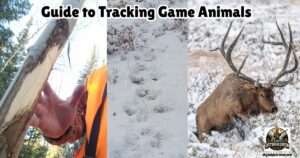
- DIY 4-Step Guide To Field Dressing And Quartering A Deer
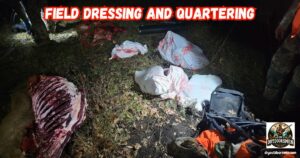
- Night Vision Binoculars For Nocturnal Hunting
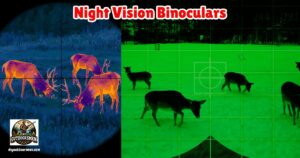
- The Science Behind Camouflage Patterns For Deer Hunting

- Binocular Accessories For Hunters

- 9 Tips for Using Trail Cameras To Track Deer Movements

As always, stay safe, enjoy the journey and please try to leave it cleaner than you found it. If you have any comments, questions, ideas, or suggestions please leave them in the comment section below and I’ll get back to you ASAP. You can follow us on YouTube: Man Art Creations for videos of our DIY Adventures.
P.S. – Thanks so much for checking out our blog we really appreciate it. Just so you know, we may receive a commission if you click on some of the links that appear on our site. This helps us keep our content free and up-to-date for everyone. We appreciate your support!
